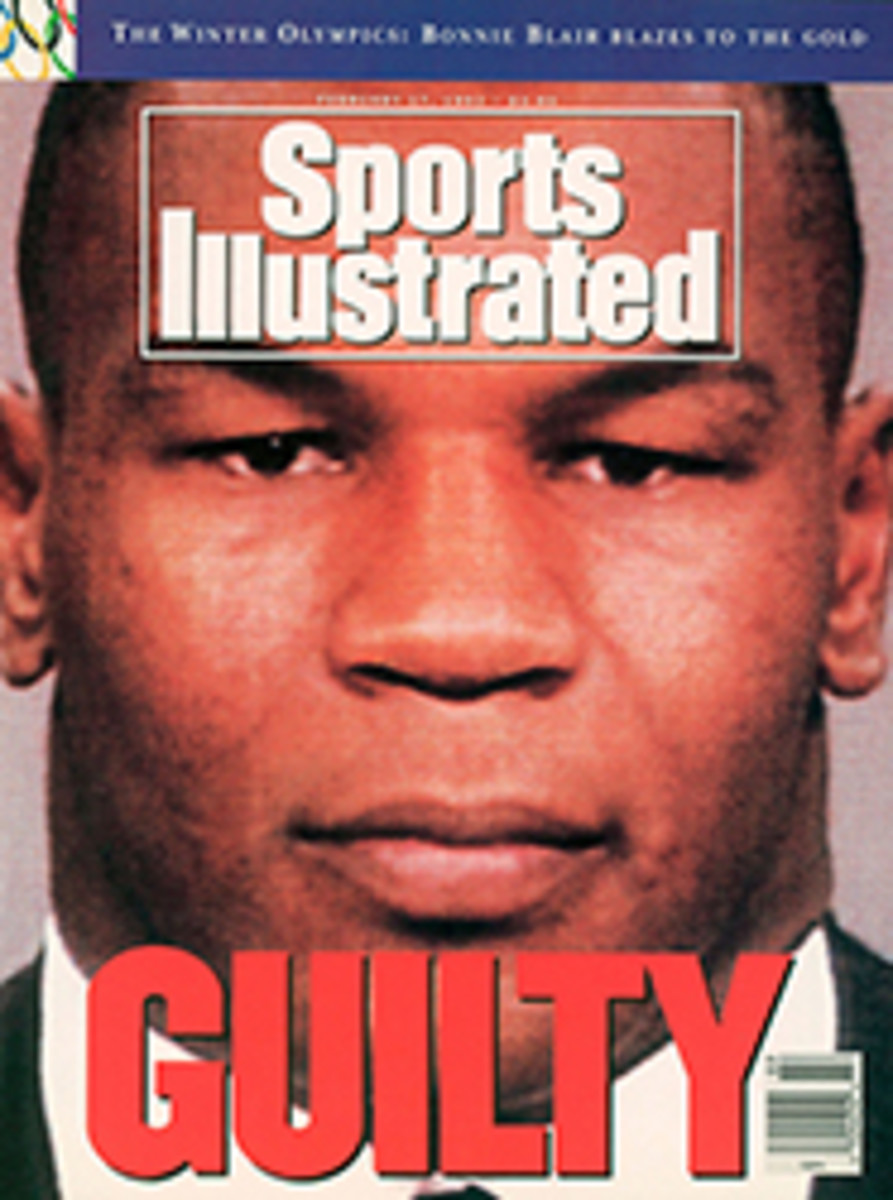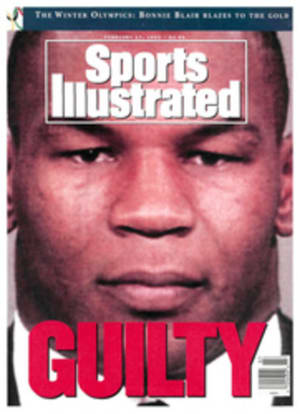
The NBA All-Star Game
What a Love Triangle
Now, here's an interesting new odd couple—Piston guard Joe Dumars and Bulls assistant coach Tex Winter, who were engaged in animated conversation at last Saturday's practice session. What could they have been talking about? The warm and cuddly relationship between the Pistons and the Bulls? Whether their favorite player is Michael Jordan or Isiah Thomas? The dapper wardrobes of Detroit coach Chuck Daly and Chicago coach Phil Jackson?
No, Dumars and Winter were discussing Winter's triangle offense, which, lo and behold, has been adopted in part by the Pistons. At a practice after Detroit's most recent loss to Chicago—by 117-93 on Jan. 24—Daly told his team, "O.K., we're going to learn the triangle. They've been effective with it. They get good shots with it. No reason we can't do the same."
The irony goes beyond the possibility that the once proud Pistons may soon be running an alignment favored by their hated rivals. In its championship seasons of 1988-89 and '89-90, Detroit ran an isolation-oriented offense that was almost the polar opposite of the everyone-involved-everyone-moving triangle that Winter first diagrammed as coach at Kansas State more than 30 years ago. "I love it, and I don't know anyone on our team who doesn't," said Dumars last week. "We're not nearly as advanced as the Bulls are, but then, they weren't real proficient with it at first, either. It keeps the floor spread and keeps people from standing around. It's going to make us a better team."
Winter is pleased to see the gospel of the triangle—a motion offense that utilizes constant passing and cutting rather than set plays or isolation plays—being spread, though he won't be thrilled in the unlikely event that the Pistons out-triangle the Bulls in the playoffs. In any case, he wants to correct Daly on one point. "I saw where Chuck came out and said, 'Well, Tex Winter wrote a book about it in the '30s or '40s,' " says Winter. "I'm pleased he gave me the credit, but I wrote the book in 1962. I'm not that old, Chuck." Winter, 69, is believed to be one of the oldest coaches in basketball at any level. And Daly, at 61, isn't that far behind.
More for Les
One of Saturday's best moments came when obscure Kings point guard Jim Les challenged the Bulls' Craig Hodges in the Long Distance Shootout. When it was over, and Les had fallen one point short of dethroning Hodges, who now has won three straight shootouts, Les turned to some of the All-Stars seated at courtside and went down the row high-fiving them all: Magic Johnson, Charles Barkley, Isiah, Patrick Ewing, Clyde Drexler. Until that moment, Les, who has been on the roster of six NBA teams as well as three teams in the CBA and the WBL, was probably all but unknown to that group.
Saturday's worst moment? Before the competition, an ITT Sheraton executive told the competitors, "If you win and mention 'Sheraton' in the television interview, we'll fly you anywhere." (In his interview with TNT after the competition, Hodges declined the offer. Maybe he travels enough.)
Dump the Dunk
Memo to league commissioner David Stern: Even Cedric Ceballos's climactic jam that won him first prize in the Slam Dunk contest couldn't save this increasingly lame competition. Ceballos, a second-year forward from Cal State-Fullerton, made the spectacular shot while wearing a blindfold; he had counted the number of steps to the basket before the attempt.
Unfortunately the contest has become too drawn out with eight entrants and too boring without the big names, who no longer compete. Convene a committee immediately to discuss a one-on-one competition or a H-O-R-S-E game as an alternative.
The Iceman Cometh?
Attention, coaches and general managers: George Gervin scored 24 points in 16 minutes, including two three-pointers, and grabbed 11 rebounds in Saturday night's Legends game. Said the 39-year-old Iceman, who is 16 months older than Boston's Robert Parish, "I think I can shoot just as well as most of the guys in the league. I can't play as long, but if the opportunity comes. I'll sure come back."
The other big news in the Legends game involved the serious knee injuries suffered by David Thompson and Norm Nixon, both of whom were taken out on stretchers and transported to Florida Hospital. Thompson ruptured a tendon in his left knee, while Nixon ruptured the quadriceps tendon of his right knee. Coming next year, ladies and gentlemen: the Schick Legends Free Throw Shooting Classic.
The Assist Man
Barring injury, Utah's John Stockton should supplant Magic as the NBA's all-time assist leader sometime during the 1994-95 season, which will be Stockton's 11th year in the league. Magic attained his record 9,921 assists over 12 seasons, 10 of which he played with that most reliable of assist-assisters, Kareem Abdul-Jabbar. At week's end Stockton's 13.9-assists-per-game average led the Suns' Kevin Johnson, who was in second place, by nearly four full assists per game. Further, the Jazzman is on pace for another 1,000-assist season, which would be his fifth in a row. Consider: Isiah (1,123 assists in 1984-85) and Kevin Porter (1,099 in '78-79) are the only other players in league history with even one 1,000-assist season.
Stockton, who is reluctant to expound on any subject, especially himself, doesn't offer much help on how he does it. But here are a few reasons:
•Karl Malone. The Mailman is a potential assist whether on the blocks or on the move, and there aren't many players like that. Moreover, now that the Jazz's half-court offense includes guard Jeff Malone, one of the league's best jump shooters off the pick. Stockton's assist opportunities have increased.
•Smarts. "He has complete control of everything going on in a game," says Karl Malone. "He's the smartest player I've ever known."
•Concentration. "He is mentally prepared every single moment," says Utah coach Jerry Sloan. "That's what makes him special."
•The absence of other good Utah passers. Even Magic had to compete for assists with Kareem, Byron Scott and James Worthy, but Stockton has no rivals. Neither of the Malones is known as a passer, and center Mark Eaton gets the ball on offense only by accident.
Front and Center
They shook hands in the center circle on Sunday as the reigning kings of the paint in their conferences—the Knicks' Ewing for the East and the Spurs' David Robinson for the West. But which player is really the main man in NBA circles?
It's Robinson, according to this week's SI poll, which asked the question: Would you rather have Ewing, 29, or Robinson, 26, as your pivotman? Twenty of 25 coaches and general managers answered Robinson, with surprisingly little equivocation. And no one said, as we feared might happen: "Forget both of them. I'll take Hakeem Olajuwon." True, at the All-Star break Olajuwon led both players in rebounding (12.6 per game, compared with Robinson's 12 and Ewing's 11) and led Ewing in blocks (Olajuwon had 4.25 per game, Robinson a league-high 5.02 and Ewing 2.89). Still, Robinson and Ewing have more versatile offensive games, and that moves them ahead of Olajuwon.
And what moves Robinson ahead of Ewing? Youth and quickness, to name two factors mentioned by most respondents. And defense, to name a third. One Eastern Conference coach felt Robinson's defensive edge was pronounced: "When you get right down to it, Patrick's defensive principles are awful."
Summing up Robinson's game, a Western Conference coach said, "His size, quickness and touch make him unique on both ends of the floor. He's Bill Russell, only four inches taller and with a great shooting touch."
The most frequently heard complaint about Robinson's game is that he doesn't play hard all the time. His supporters, however, don't agree. Said one Western Conference general manager, "If it's true that Patrick is more competitive than David, all I can say is that it hasn't shown up in David's productivity."
PHOTO
DAMIAN STROHMEYER
Not even Ceballos, who blindsided the field, made the Slam Dunk contest worth saving.
PHOTO
NATHANIEL BUTLER/NBA PHOTOS
Robinson (50) easily moved past Ewing in this week's pivotal poll.

